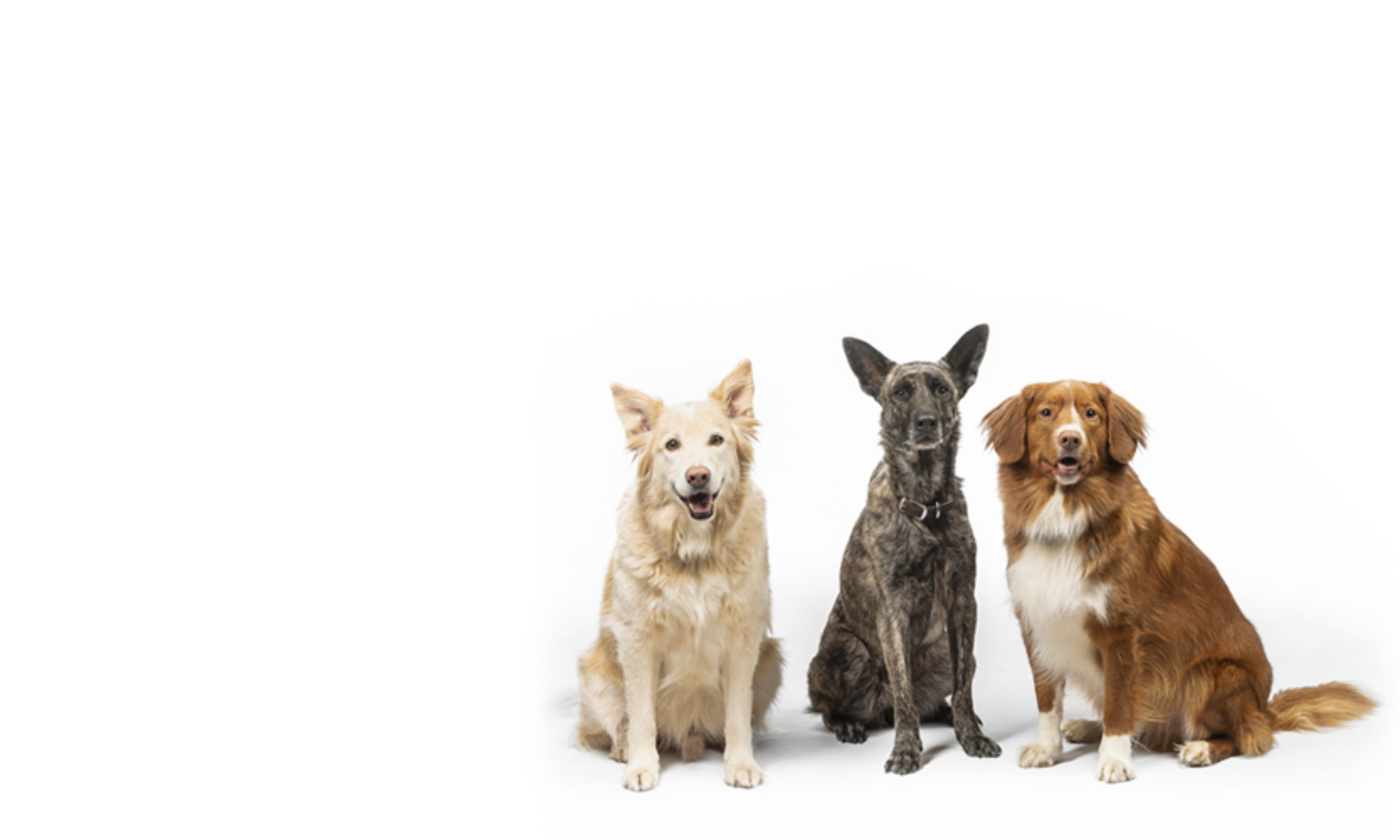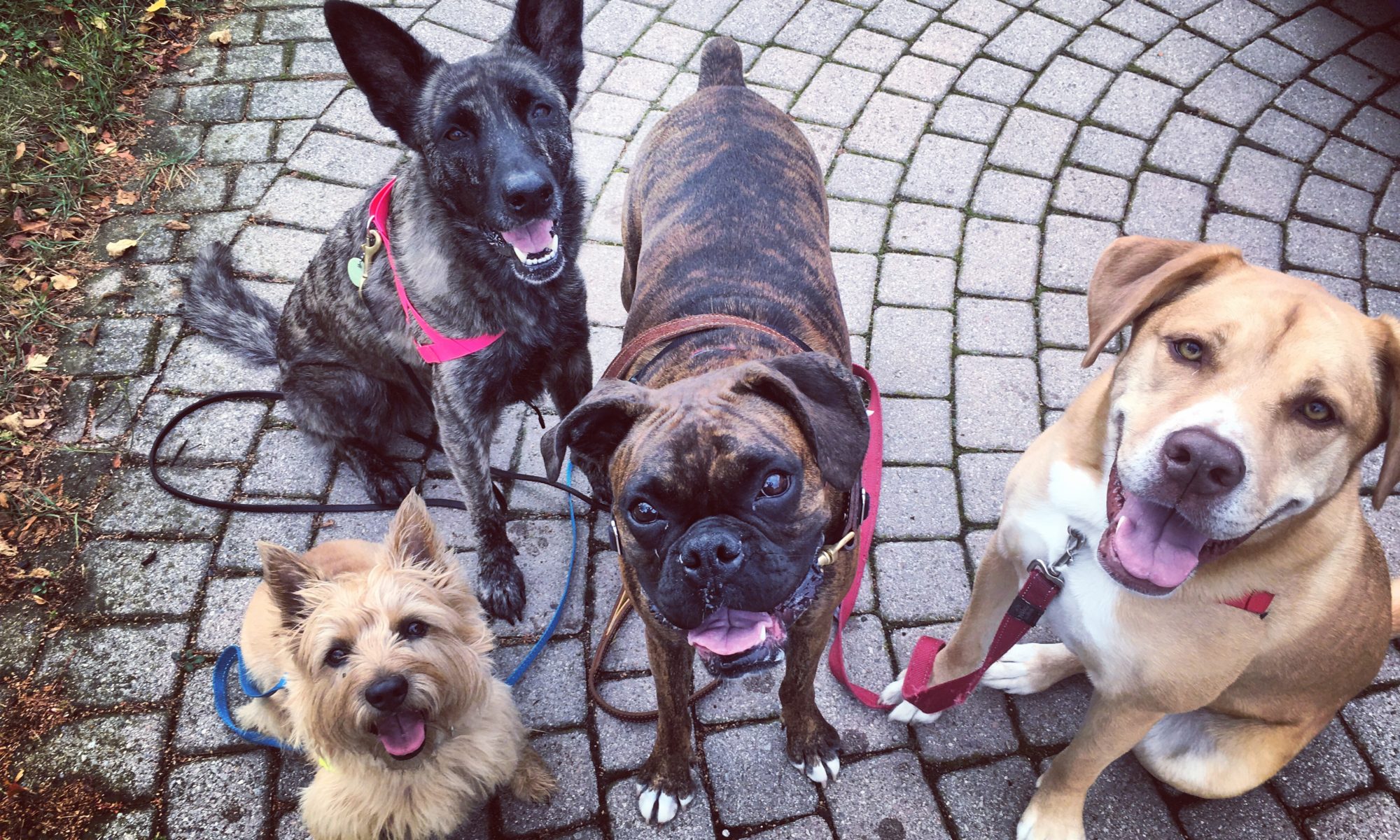Now that we have introduced the importance of Engagement in your loose leash walking, we can start to build other behaviours!
As mentioned previously, loose leash walking is a culmination of impulse control, handler awareness, engagement, and focus. This blog post will overview training your dog to focus on you in environments you may encounter on your walks.
Focus is all about teaching your dog to look at you or ‘check in with you’. Similarly to engagement, focus is an incompatible behaviour to pulling – if your dog is focused upon you, they cannot pull you towards distractions. Most often, dogs learn to focus quickly at home and in their yards but out in the ‘real world’ they struggle. As a result, this is where a large portion of your training for this skill will be practiced. As soon as your dog is successful in the home and around it, it should be practiced outdoors and in various environments.

Focus training differs from engagement because focus is ‘cued’, which means it is eventually given a verbal command – some people may use their dogs name, or “look at me” or “watch”. Regardless of your verbal cue the behavior is set up so that you ask for it in situations that may be helpful. These include when distractions walk by you and your dog, or when they are caught looking at something for too long.
The reason we advocate for engagement to be taught before focus is because engagement training lays the groundwork for our dog’s desire to work with us. Once we have encouraged motivation and a desire to work with us, teaching Focus becomes easy!
MANAGING EXPECTATIONS ON WALKS
It isn’t a realistic expectation for our dogs to solely stare at us on a walk – that would make the excursion pretty uninteresting for them. Instead of attempting to force our dogs to stare at us and ignore distractions (which is quite frankly, difficult to do!), the goal of walks should be to balance the dog’s desires to sniff and explore while also offering us appropriate and controlled behaviours.
So how do we start?
The goal of teaching focus through the exercise outlined below is to teach the dog to glance at the things they find interesting, and wait for them to offer you a moment of focus or attention. This method of training is called Capturing – which means that we are not asking for a behavior, the dog is offering it and being subsequently rewarded for it. This reinforcement history will cause the dog to repeat this skill over and over in the future.
Think of it this way: Every time your dog pulls you towards a fire hydrant and sniffs it, they are being rewarded. Not by you, but by the consequences of their actions. Sniffing and exploring are reinforcers for our dogs just as food is, which means they will continue to practice the same patterns of negative behaviour. Spotting a distraction and pulling you excitedly towards it can quickly become a pattern in walks until we start to implement alternative behaviours. If we want our dogs to learn new skills, we need to start by setting them up for success and working on gaining their focus well before we walk them close to their distractions.
The Drill
- Have your dog on leash in a quiet, familiar environment and have treats in your pocket. Allow your dog to look, roam, and smell where they wish.
- As soon as your dog glances in your direction, mark and reward. Allow them to return to gazing or roaming.
- When they turn to you again, mark and reward.
- As your dog glances at you more frequently, reward accordingly. Try ten repetitions and see how many your dog can do quickly!
IF YOUR DOG PULLS/JUMPS TOWARDS OTHER PEOPLE/DOGS…
If you are practicing focus or engagement work with your dog and they pull or jump towards people, you are likely working too close to distractions. Try putting some distance between your dog and those distractions and try training them at that level for a period of time before making it more difficult.
It is important to note that many dogs find it challenging to walk by another dog on a busy or crowded sidewalk. Although city life has granted our dogs all the comforts of life, some dogs find on leash proximity to others dogs distressing, frustrating or too exciting. Therefore we don’t tend to recommend you allow your dog to walk too closely to another if you do not know how your dog will react, or if they are uncontrollable.

Rarely do we recommend on leash meet and greets. They can be unpredictable and hard to physically manage, not to mention any interaction your dog gains through pulling can cause them to to be reinforced by the scenario. Instead, we suggest giving your dog some distance from another pup, and working on capturing your dogs calm focus and rewarding that skill.
EXTRA TIPS
– Practice these focus drills (and your engagement exercises) outside of your normal walks and activities with your dog.
– Capture your dogs focus until your dog offers you glances continuously. A good measure of success to follow is this: out of 10 repetitions, your dog should easily do 8 (this 80% average means that your dog is understanding what you want from them the majority of the time). Once they do, you may begin to cue it through a verbal marker – “Watch” or your dog’s name are good choices.
– Do not repeat your verbal cues! Keep your training clear by ensuring you are not repeating commands. This will only confuse your dog and make your training less effective overtime. Most of this training should be silent aside from your verbal marker.

Focus is a skill that is often undervalued in dog training but it is very useful! It is even more useful when you do not have to ‘nag’ or pester your dog for the behavior. By pairing this skill with engagement training, you motivate your dog to like being with you and checking in with you through direct eye contact and through capturing. This, proofed in various environments will make your walking successful!

